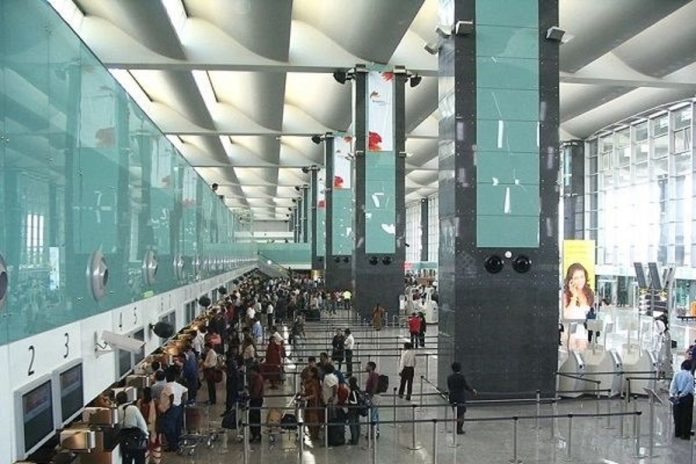Snapshot
During the year 2021, Kempegowda International Airport processed an all-time high tonnage of 4,06,688 Metric Tonnes (MT) of cargo, recording a significant growth of 28.6 per cent as against 3,16,305 MT in 2020.
Despite a turbulent pandemic environment, the Kempegowda International Airport (KIA) at Bengaluru recorded its highest-ever cargo tonnage.
During the year 2021, KIA processed an all-time high tonnage of 406,688 Metric Tonnes (MT) of cargo, recording a significant growth of 28.6 per cent as against 316,305 MT in 2020.
This is 7.2 per cent more than the pre-Covid level tonnage of 379,348 MT in 2019. International cargo recorded a 32.8 per cent growth — 265,873 MT processed, as compared to 200,209 MT in 2020.
Domestic cargo grew at 21.3 per cent, 140,815 MT processed versus 116,096 MT in 2020.
The US and Europe continue to be the top trade lanes from KIA. “The tremendous recovery in air cargo is a positive sign for the aviation sector that has been severely impacted by the pandemic,” said Bangalore International Airport MD and CEO Hari Marar.
“The key factors that contributed to the cargo growth at KIA are our resilient ecosystem that ensured efficient operations round the clock, focus on supply chain efficiencies, conducive geographic location, aided with robust infrastructure and technology, right mix of commodities, and adequate airline capacities to key markets, globally,” Marar added.
Thirteen airlines operate freighters to and from KIA to various domestic and international destinations.
Commodities driving the growth are perishables (both agricultural and poultry products), pharma, chemicals and textiles in the exports category, and electronics, heavy machineries, healthcare and life science products in the imports category.
Notably, KIA has emerged as the Number One airport in the country for perishable exports, accounting for 31 per cent of India’s total perishable shipments during FY 2020-21.
Recovery in Passenger Traffic
An increased pace of vaccination followed by greater optimism that travellers have exuded in air travel has led to a substantial recovery in domestic passenger traffic in Cargo Year 2021.
During this period, KIA welcomed 16.07 million passengers, registering a growth of 18.9 per cent versus 13.51 million passengers in 2020.
KIA has been able to recover 48 per cent of the pre-Covid level traffic of 33.65 million passengers handled in 2019.
With the gradual easing of curbs by various state governments, domestic passenger traffic recorded a double-digit growth of 22 per cent, an upswing from 12.39 million in 2020 to 15.12 million in 2021.
The second wave of Covid-19, which led to continued travel restrictions across the globe, followed by supply-side limitations on seat load factors, have led to a decline in international traffic.
During this period, international passenger traffic shrunk by 15.5 per cent, from 1.12 million in 2020 to 0.94 million in 2021. “The positive environment in 2021 ignited hopes for a better 2022 in terms of recovery. However, the recent outbreak of the new Omicron variant followed by a rapid surge in Covid-19 cases across the country is expected to suppress growth further,” said Marar.
“We believe that air traffic will eventually recover. However, the pace of recovery will depend on factors such as favourable policies by regulators and easing of travel restrictions across the country and the globe, amongst others,” Marar added.
Growth in Air Traffic Movements (ATM) at KIA were up by 22.5 per cent in 2021, with the total ATMs during this period being 153,212.
Both domestic and international movements saw an upward trend of 23.8 per cent and 12 per cent, respectively. The highest single-day ATMs was 590, registered on December 19, 2021, while the daily average ATMs for 2021 was 420 per day.
The year also saw a significant growth in the number of domestic destinations from 54 (pre-Covid) to 74, the highest ever for KIA. This is an outcome of enhanced connectivity to Tier II/III cities.
During the year, 14 new routes were introduced from Bengaluru to Agra, Bareilly, Dibrugarh, Dimapur, Nashik, Silchar, Jamnagar, Jharsuguda, Jorhat, Jaisalmer, Kurnool, Rajkot, Durgapur and Kanpur.
KIA currently serves 20 international destinations under the Government of India’s Air Bubble arrangement. As a result of KIA’s strong non-metro connectivity, there has been a two-fold increase in the transfer passenger share at KIA, with the airport establishing itself as the most preferred transit destination in South India.
The airport also has a wide catchment area of over 20 cities, with a convenient flying time of up to 75 minutes.
The top domestic routes in 2021 were Delhi, Kolkata, Mumbai, Hyderabad and Goa, with these sectors contributing 40 per cent to the traffic. On the international front, Dubai, Male, Doha, London, and Frankfurt were the top cities, contributing 70 per cent to the traffic.
2021 was a historic year for international traffic at KIA. In January, Air India commenced the twice weekly, non-stop Bengaluru-San Francisco service. With this, KIA became the first airport in South and Central India to have direct connectivity to North America.
Japan Airlines commenced flights under the Air Bubble arrangement between Bengaluru-Tokyo Narita from March 2021.
The airline plans to increase frequency once the restrictions on international travel are relaxed. United Airlines and American Airlines are expected to commence operations in 2022 to San Francisco and Seattle, respectively.
Despite restrictions on international operations, additional long-haul routes remain one of the focus areas, given the fact that KIA offers one of the highest international yields and best connectivity to domestic destinations amongst major Indian airports.


